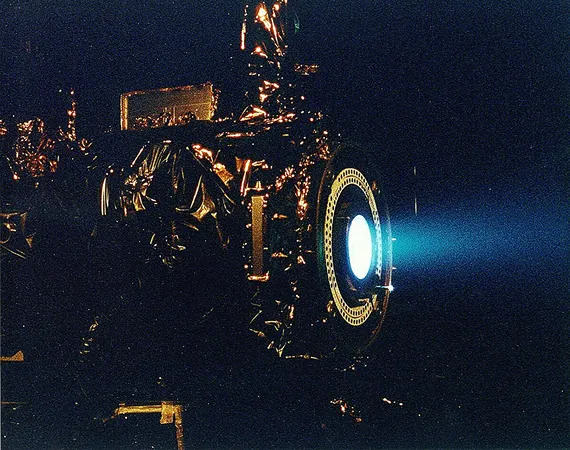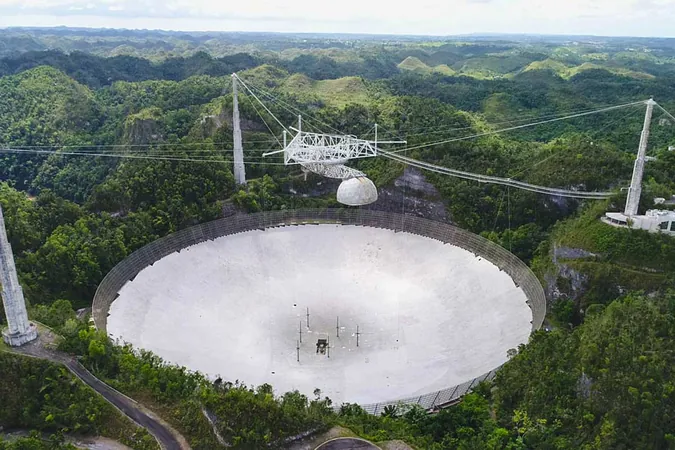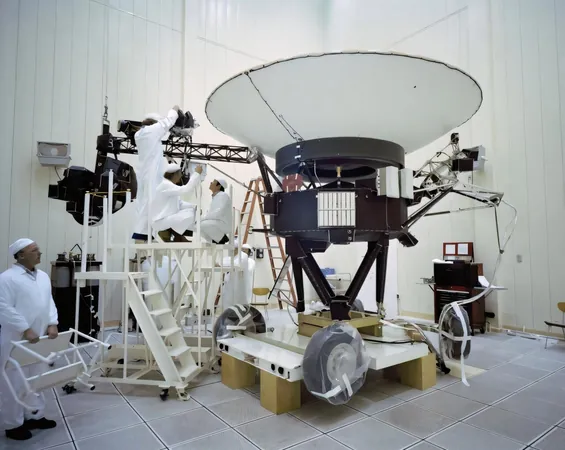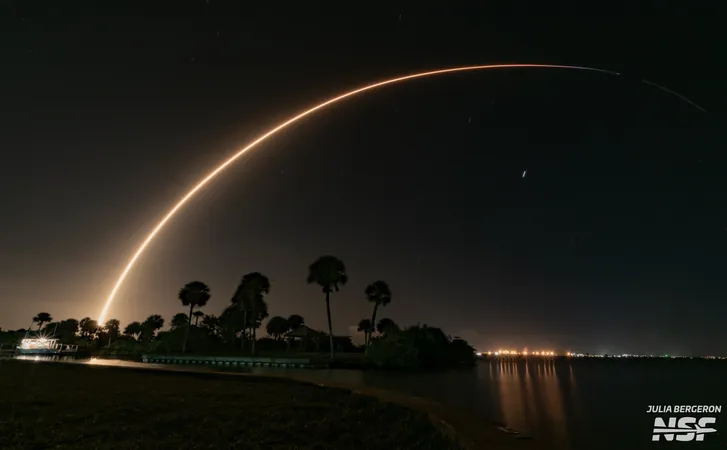
Ion Engines Could Propel Us to the Solar Gravitational Lens in Under 13 Years—Revolutionary Paper Offers Hope for Interstellar Travel!
2024-10-25
Author: John Tan
Introduction
Sending spacecraft to other stars might still seem like science fiction, but groundbreaking research is paving the way for potential missions that could bring us closer than ever to realizing this dream. Recent discussions at the 75th International Astronautical Congress in Milan unveiled a stunning possibility: using ion engines to reach the solar gravitational lens (SGL), a point located 550 astronomical units (AU) from the Sun, in as little as 13 years!
What is the Solar Gravitational Lens?
The solar gravitational lens represents a revolutionary approach to capturing images of distant exoplanets and potentially making contact with extraterrestrial civilizations. Currently, humanity's furthest-reaching spacecraft, such as Voyager, have merely scratched the surface of our solar neighborhood. The ambitious goal of reaching the SGL demands advanced technology and innovative propulsion systems—something that researchers are now actively exploring.
Ion Engines and Electric Propulsion
One such technology highlighted in the recent paper is electric propulsion, specifically ion drives. These systems offer a compelling, efficient method of thrust that could enable long-duration interstellar travel. The research paper evaluates current ion drive technologies and proposes an ideal configuration featuring advanced characteristics designed to optimize the system’s physical capabilities.
Power Requirements for Ion Thrusters
At the heart of effective ion propulsion is the power source. Current ion thrusters operate at an output of about 10 watts per kilogram, while leading nuclear propulsion technologies achieve only around 100 watts per kilogram. However, to sustain ion engines for over a decade of thrusting, an astounding power output of 1 kilowatt per kilogram is necessary. While this remains unattainable with today’s technology, researchers are hopeful that emerging power sources will eventually meet this requirement.
Thrust Efficiency
Thrust efficiency is another crucial aspect. The study suggests a dream scenario where thrust efficiency reaches 97%. Currently, most working ion drives achieve only between 75% and 80% efficiency, leaving a considerable margin for improvement. Researchers hint at potential enhancements, such as employing magnetic containment fields around thruster walls that could elevate efficiency closer to that goal.
Specific Impulse and Its Significance
Moreover, the paper details the importance of specific impulse—a measure of efficiency in propulsion systems. The authors propose an ideal specific impulse of between 34,000 and 76,000 seconds, aligning with speculative yet plausible technologies. Remarkably, they posit that specific impulses could double if the right propulsion technologies and propellants are selected. However, the primary bottleneck remains in engineering power plants that can adequately support these advanced ion systems.
Conclusion and Future Outlook
If all these ideal characteristics can be realized in a functional propulsion system, the dream of delivering an 18,000-kilogram payload to the SGL within just 13 years might become a reality! This groundbreaking development could revolutionize our understanding of deep space and bring us closer to discovering new worlds and life beyond our solar system.
However, there’s still a long way to go before these prophetic visions turn into actual missions. With planned missions to the SGL on the horizon, engineers face numerous challenges ahead, but the pursuit of optimized ion thrusters continues to ignite excitement in the scientific community. Stay tuned as we follow the trailblazing journey of humanity towards the stars!




 Brasil (PT)
Brasil (PT)
 Canada (EN)
Canada (EN)
 Chile (ES)
Chile (ES)
 España (ES)
España (ES)
 France (FR)
France (FR)
 Hong Kong (EN)
Hong Kong (EN)
 Italia (IT)
Italia (IT)
 日本 (JA)
日本 (JA)
 Magyarország (HU)
Magyarország (HU)
 Norge (NO)
Norge (NO)
 Polska (PL)
Polska (PL)
 Schweiz (DE)
Schweiz (DE)
 Singapore (EN)
Singapore (EN)
 Sverige (SV)
Sverige (SV)
 Suomi (FI)
Suomi (FI)
 Türkiye (TR)
Türkiye (TR)